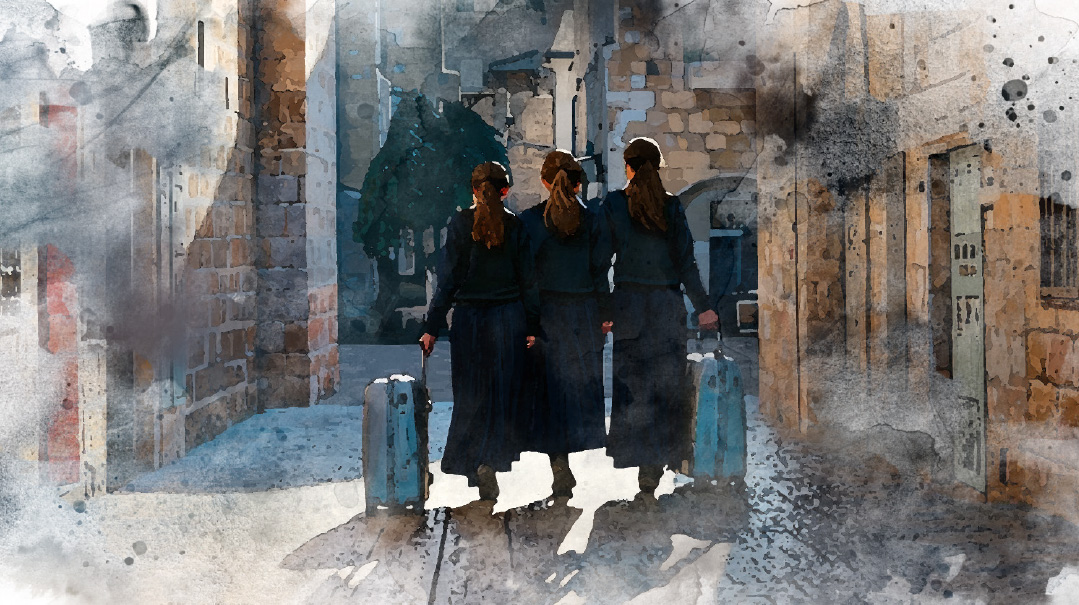The Very Real People Who Don’t Really Exist

Dig past the times, dates, names, and spellings, and you’ll discover that effective fiction is all about nuances
Just the other day I was cced on an email sent by a proofreader to the writer of a serial.
“In this chapter I’m proofing, you mention a character named XYZ. Are you sure about the name?” the proofreader queried. “We don’t have it on our list.”
Yes, really. Our proofreaders actually keep a running list of the characters in every serial, and they check it religiously every time they proofread a new installment. Because as Mr. Refoel Pride, our chief proofreader, puts it, “If I’d make a Venn diagram depicting the skill sets that go into creating a serial, the skills of ‘being able to plot and write an entire serial’ and ‘being able to remember how to spell a character’s name consistently for 50 chapters’ would apparently not overlap.”
Spelling isn’t the only issue that benefits from a sharp-eyed proofreader. There are other kinds of inconsistencies too: the character on a diet who is indulging in a carb-heavy meal. The cherished einekel of Holocaust survivors who is way too young to have had a grandmother alive in 1939. The travel route that takes too many or too few hours, or the direct flight on an airline that always does stopovers.
But that’s okay, because we’re a team. And if the brilliant writer who can build lifelike personalities can’t do math, the editorial staff is happy to help out.
It’s not just math or fact-checking, though. What happens when two writers submit fantastic stories for the Calligraphy fiction collection, and each features a hero named Shmuli? Or — as actually happened one year — three stories featured a Minna and four included a Chaim? Imagine the readers trying to keep track of so many different stories with the same repeating names! At this point our editors keep lists of all the characters appearing in each Calligraphy collection, and sometimes writers will be asked to change Heshy to Beri or Aviva to Rina.
Dig past the times, dates, names, and spellings, and you’ll discover that effective fiction is all about nuances. Rachel Bachrach, a Calligraphy editor who’s exquisitely attuned to word choice, will ask writers things like “Are you sure a character from a chassidish background would use that phrase?” or point out things like “I think this character is too young to ‘chuckle.’ ”
Editors who are able to grasp the invisible threads connecting people and their choices use that strength to help the writers build more realistic scenes. They’ll point out things like “Don’t you think the underlying tension between the husband and wife should play more of a role in this dynamic?” or “I don’t think the daughter is reacting in character, she’s not a strong enough personality to respond that way” or “If what’s really motivating him is guilt, then the scene shouldn’t end that way.”
We even have editors and writers who use personality-typing systems to build characters and plot their interactions, struggles, and victories. “Hmm, if I marry off a 3 to a 9, and she’s frustrated by his lack of ambition, then how will things play out?” “He’s such an 8, of course he’s going to get angry when his son does that.”
It gets surreal at times, these spirited discussions about people who don’t exist — what clothing they wear, what kind of suppers they serve, what makes them angry or happy or vengeful or unfulfilled. But it’s only slightly less surreal than the letters we get afterward from our readers worrying about, cheering for, or berating these very real people who only exist in the pages of a magazine.
(Originally featured in Mishpacha, Issue 821)
Oops! We could not locate your form.






